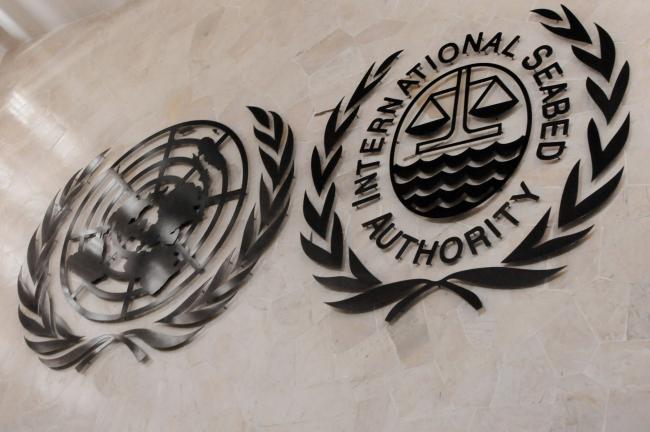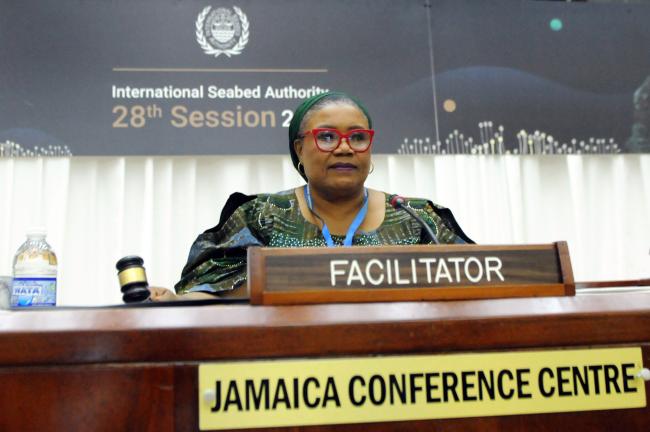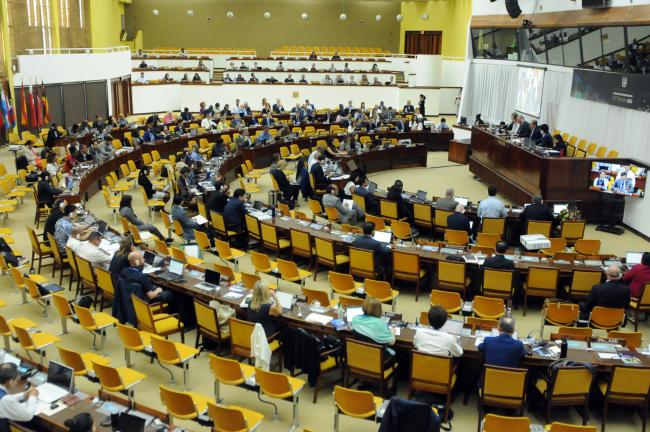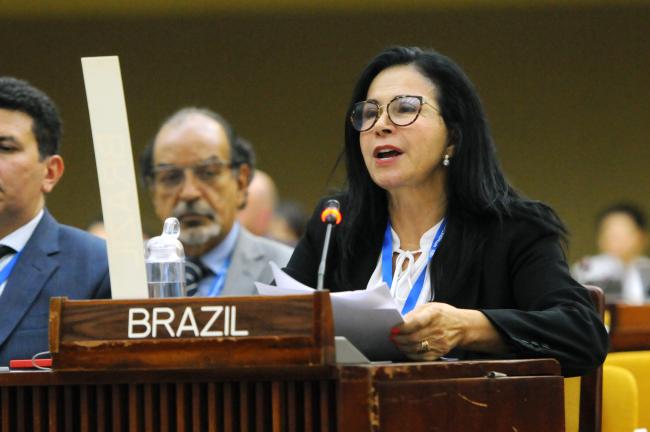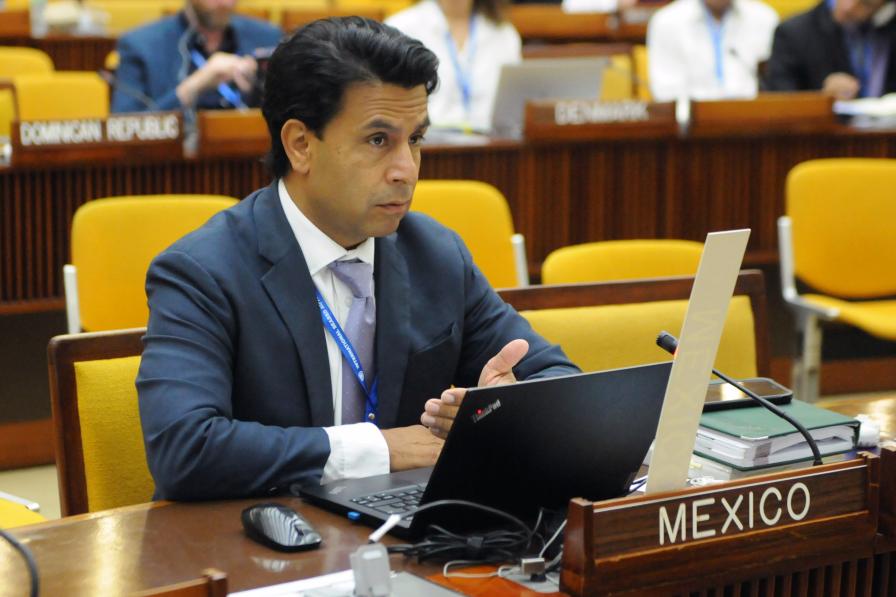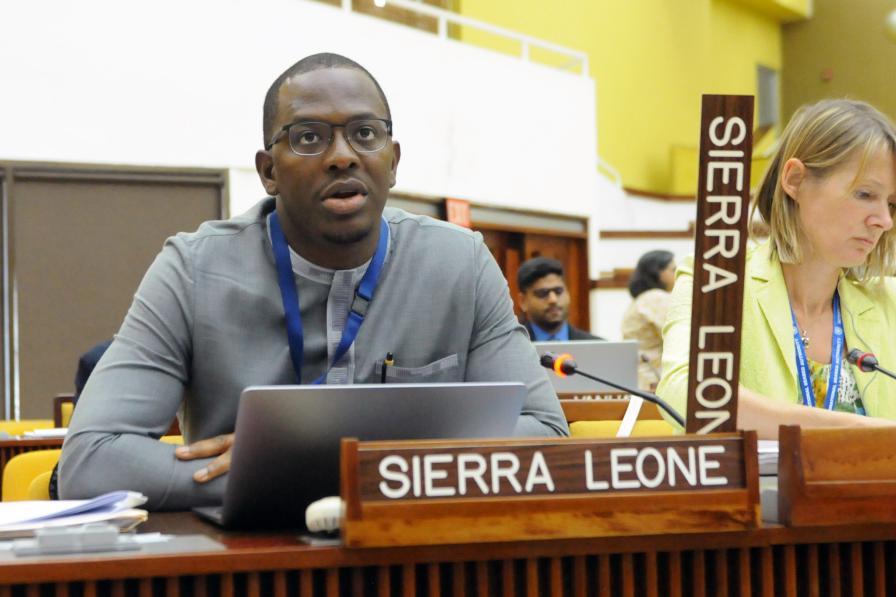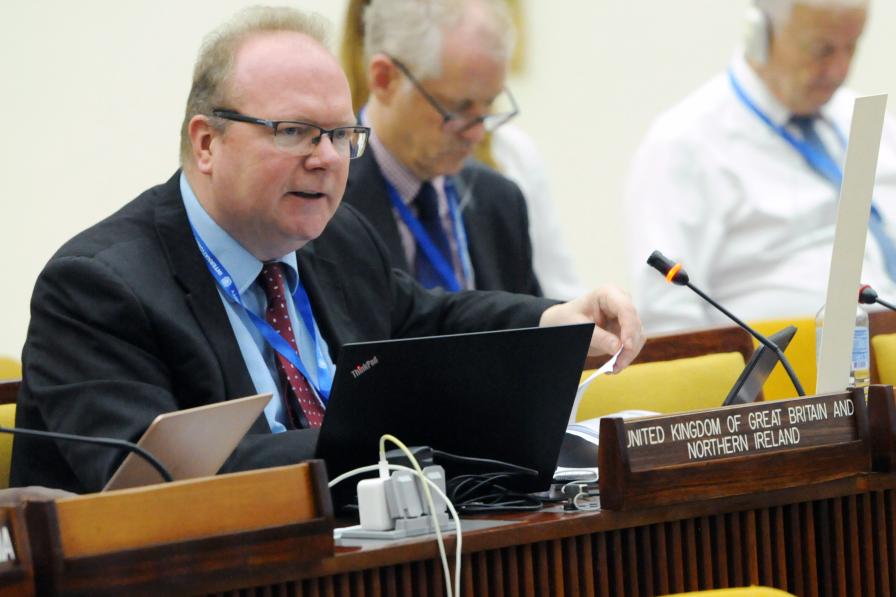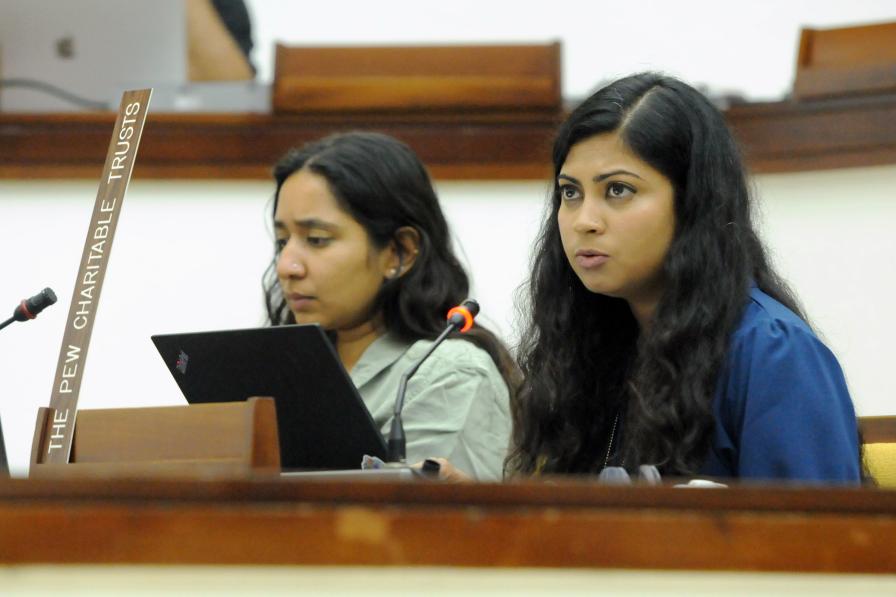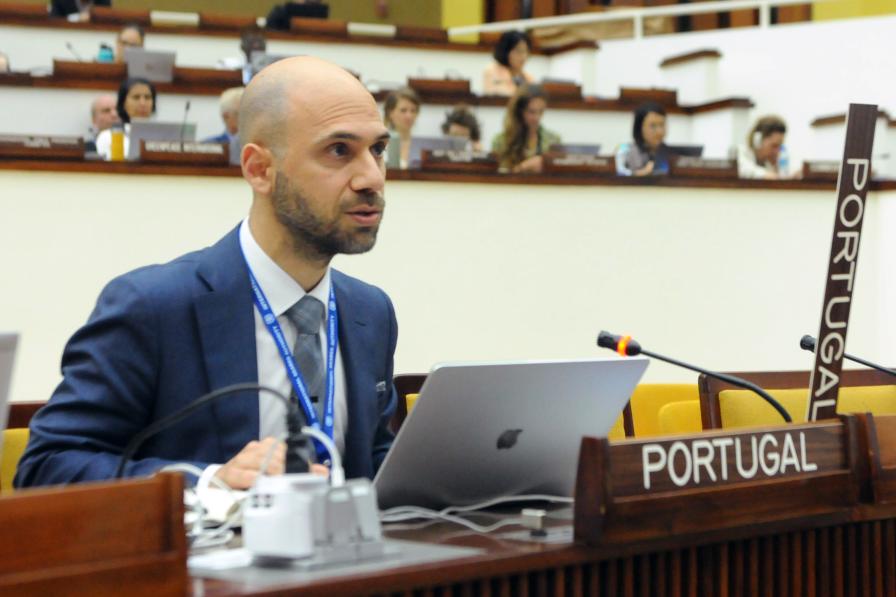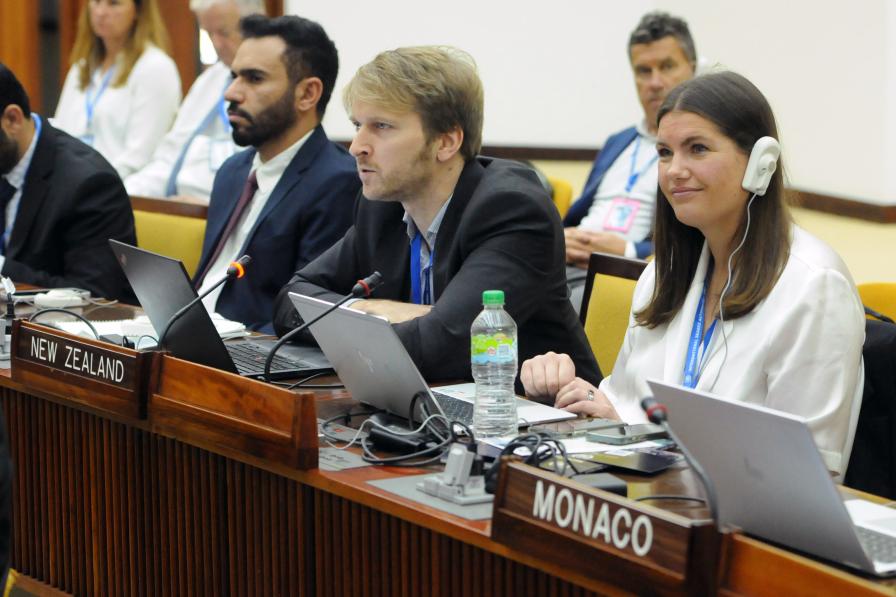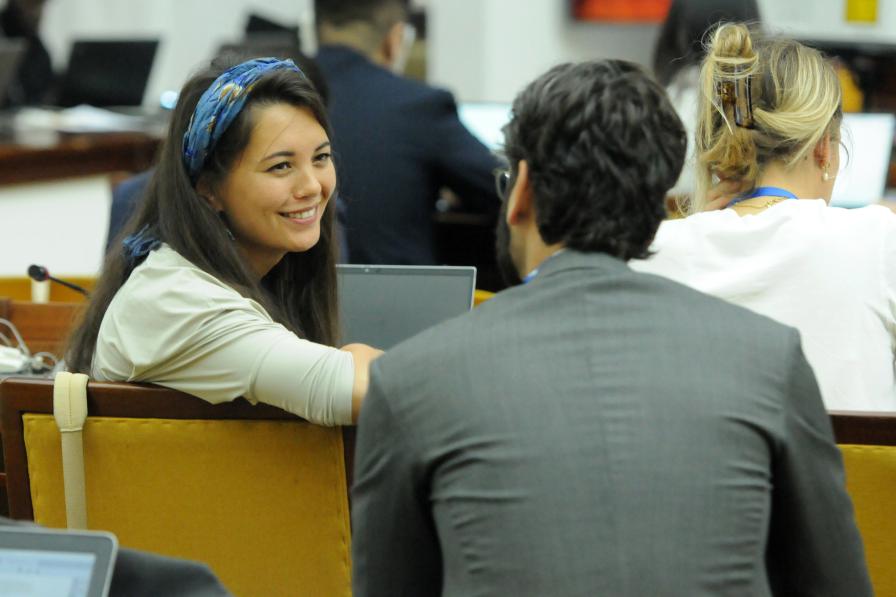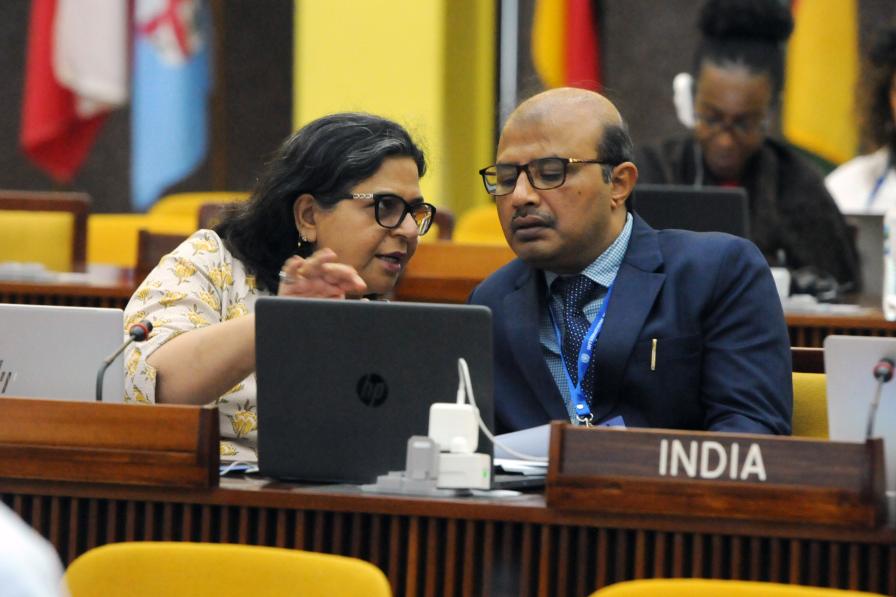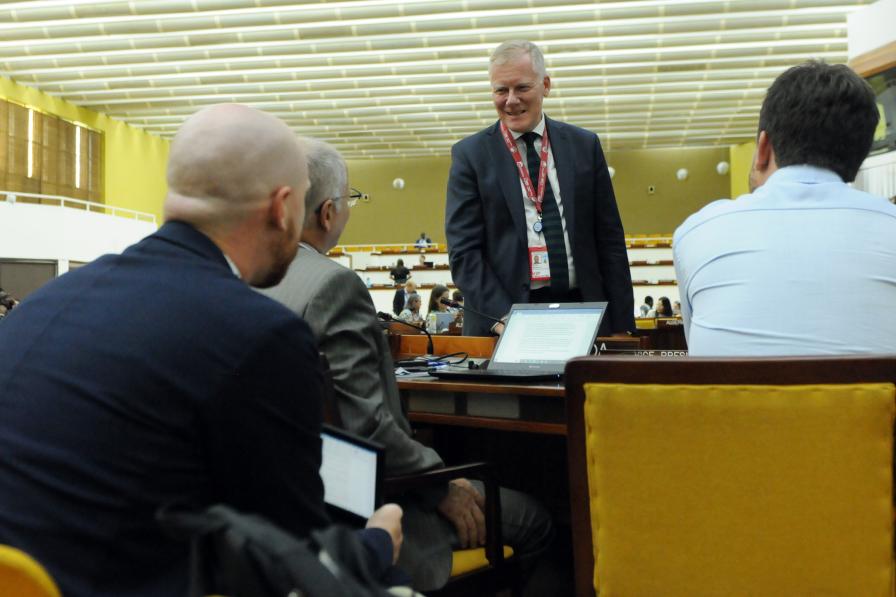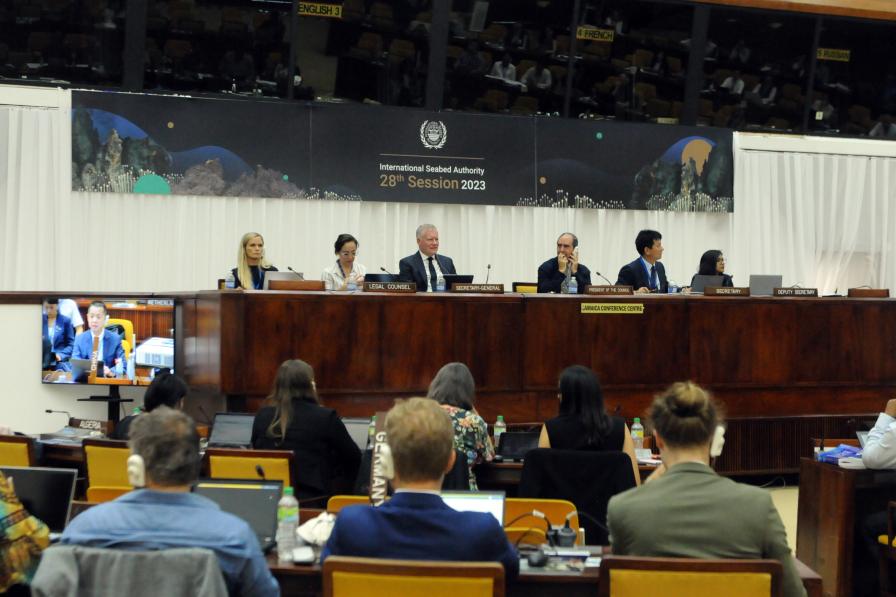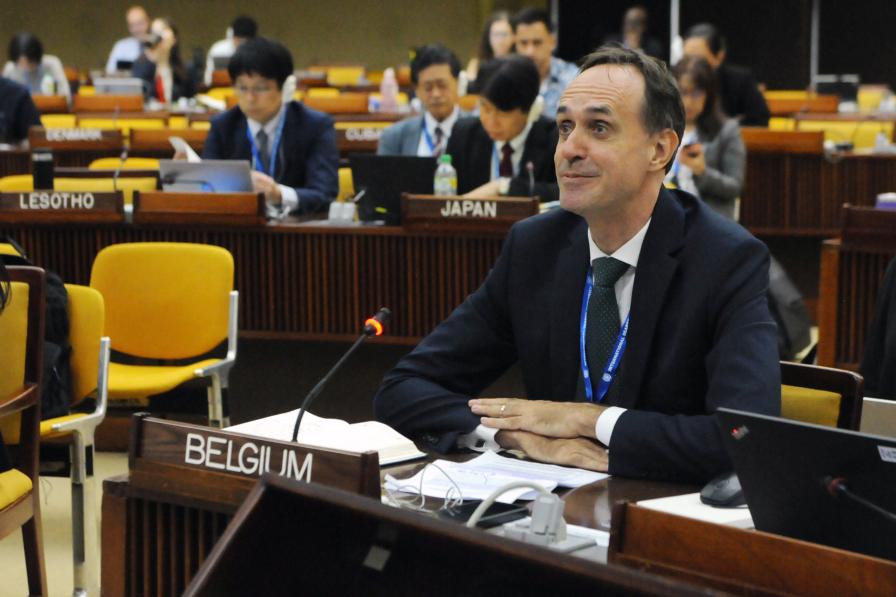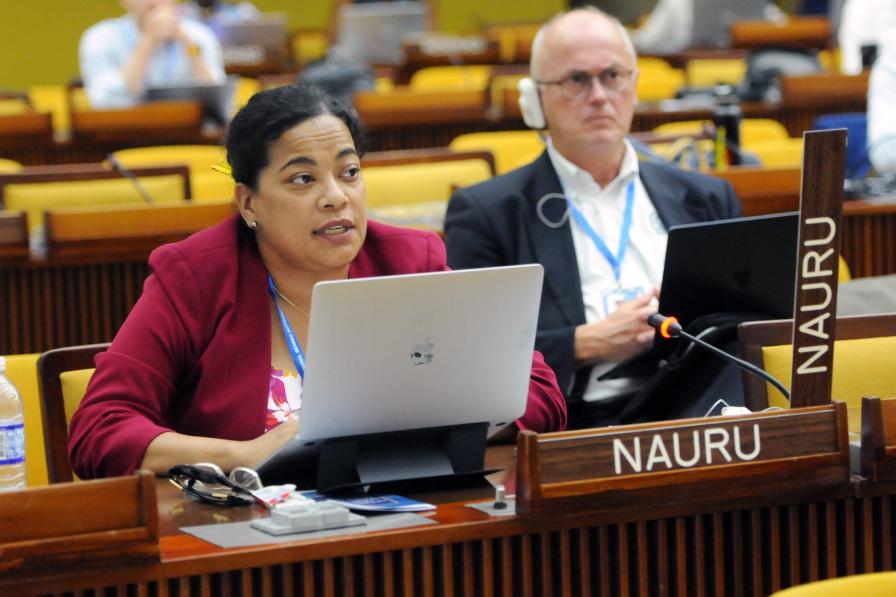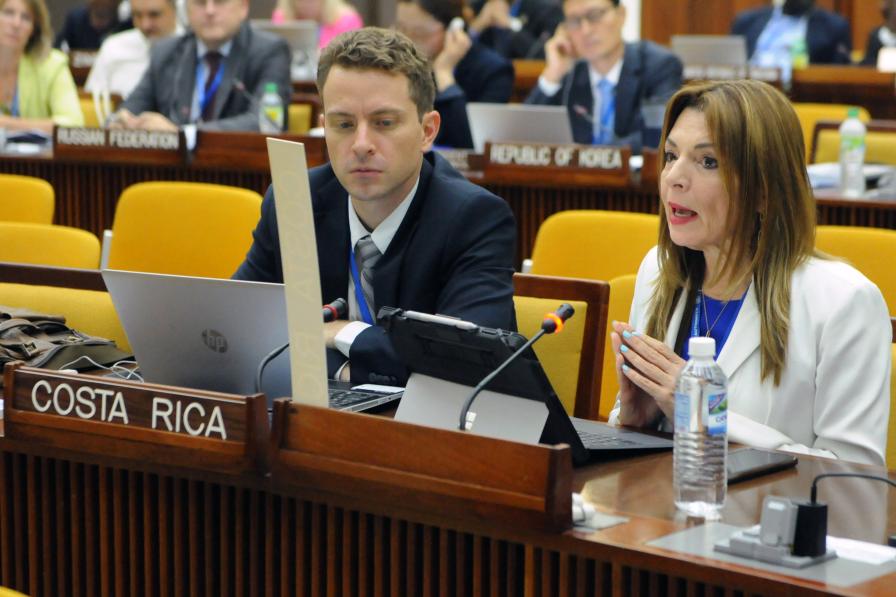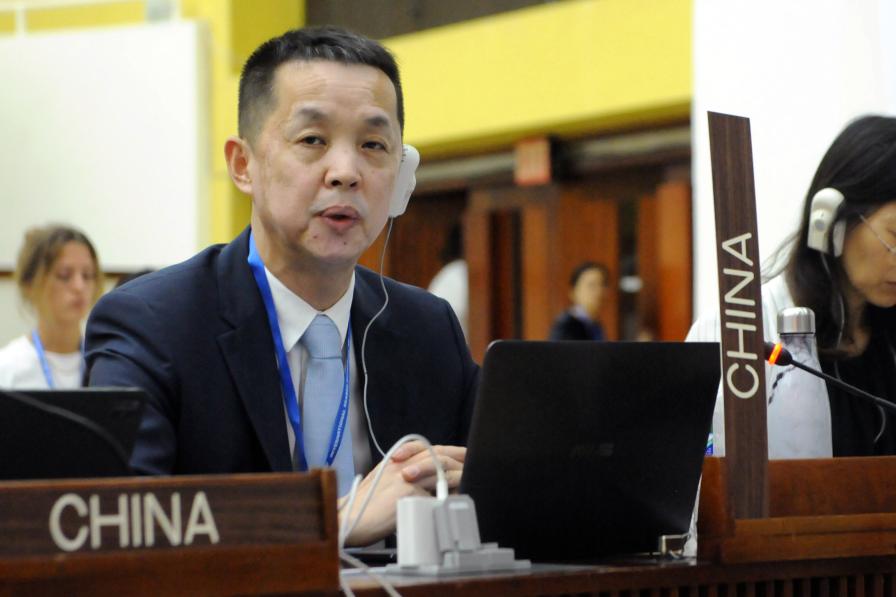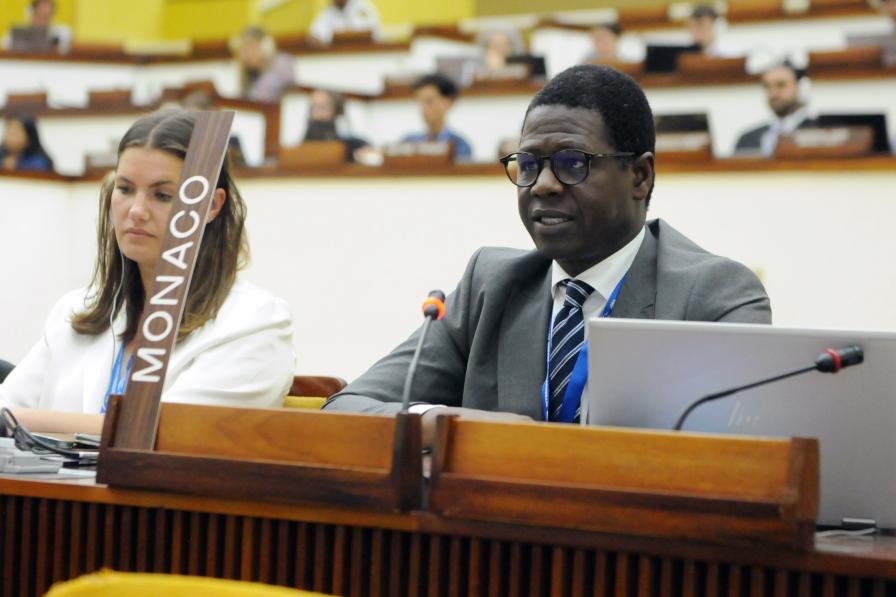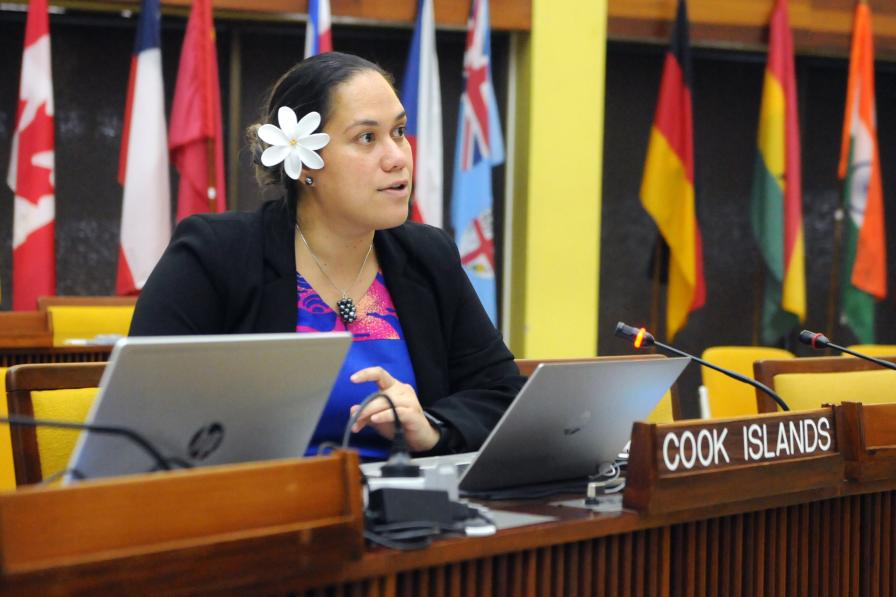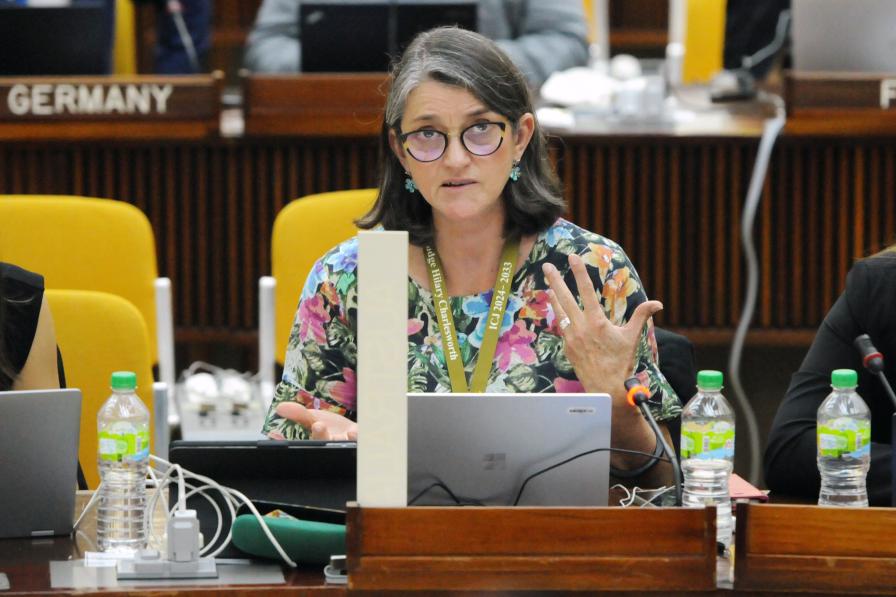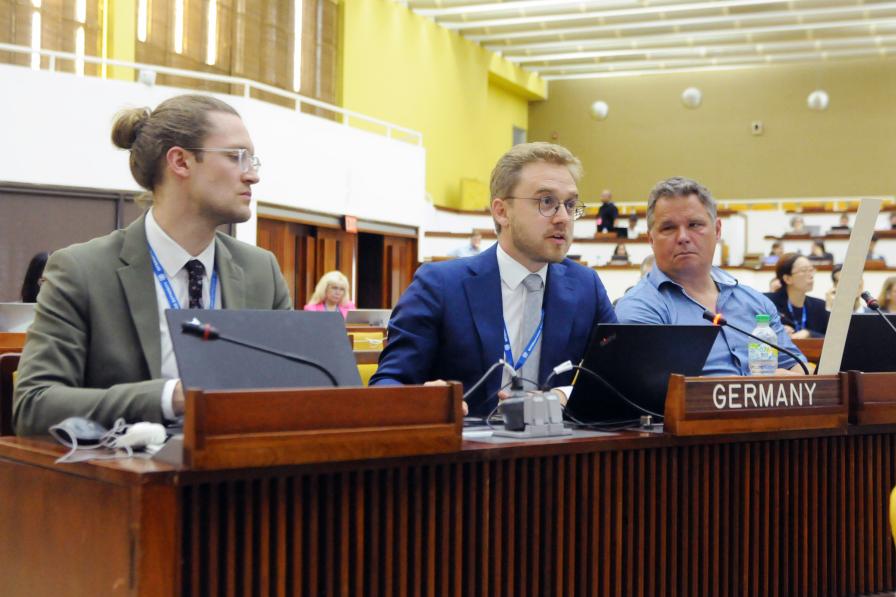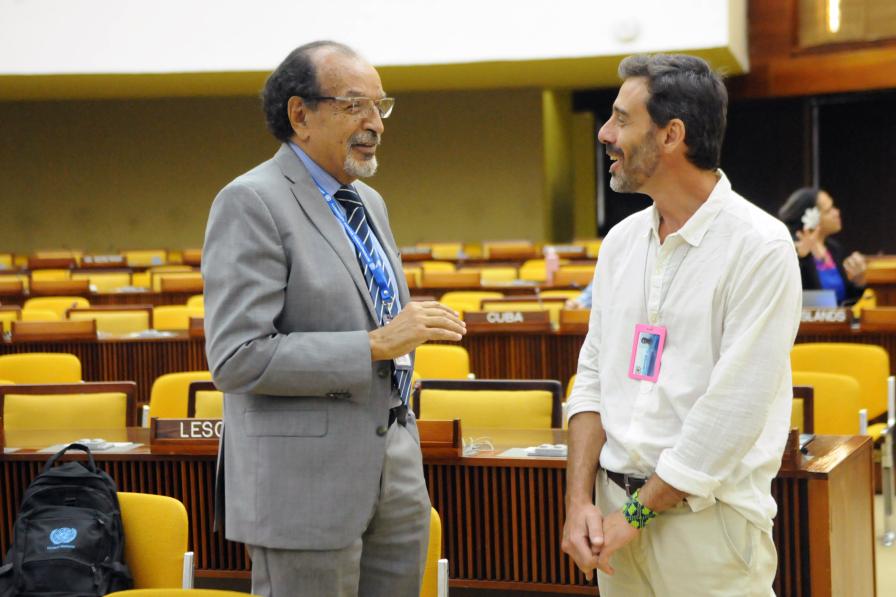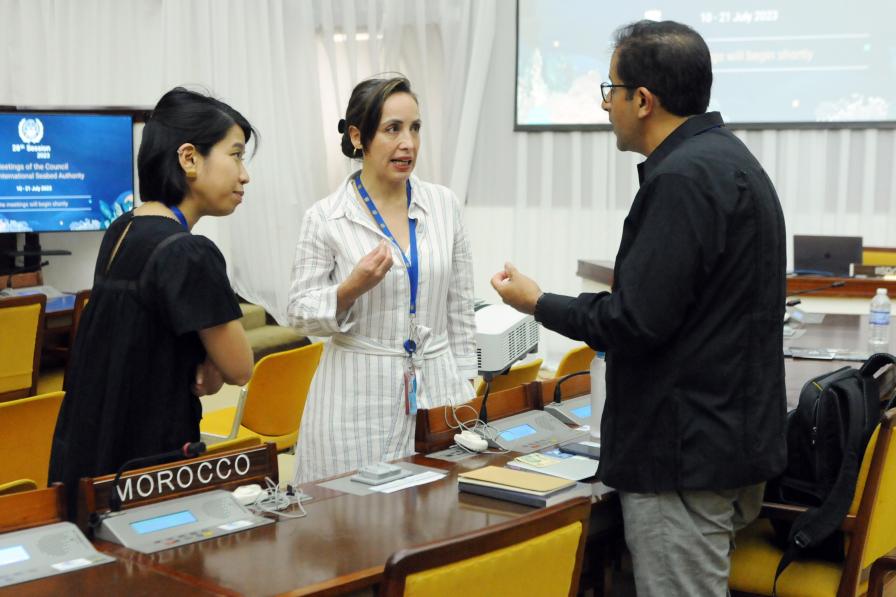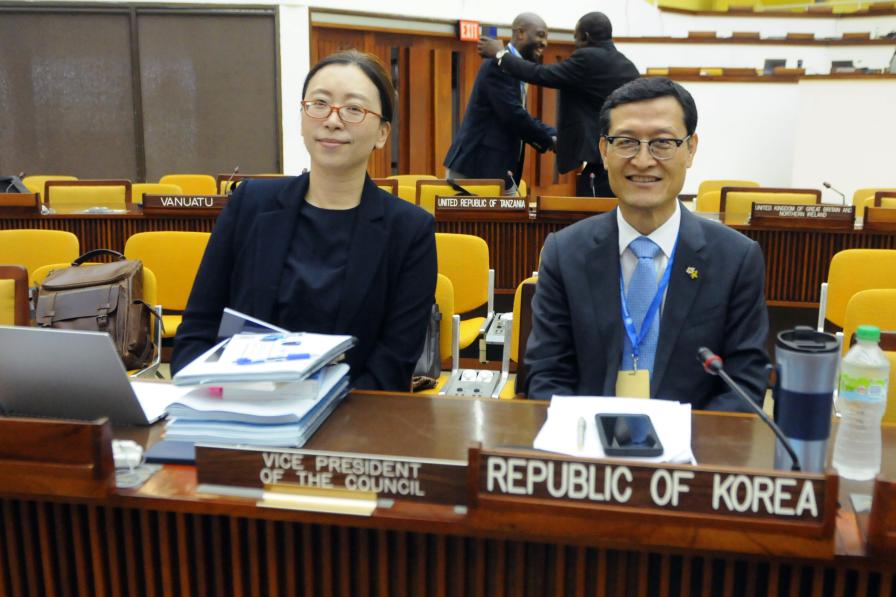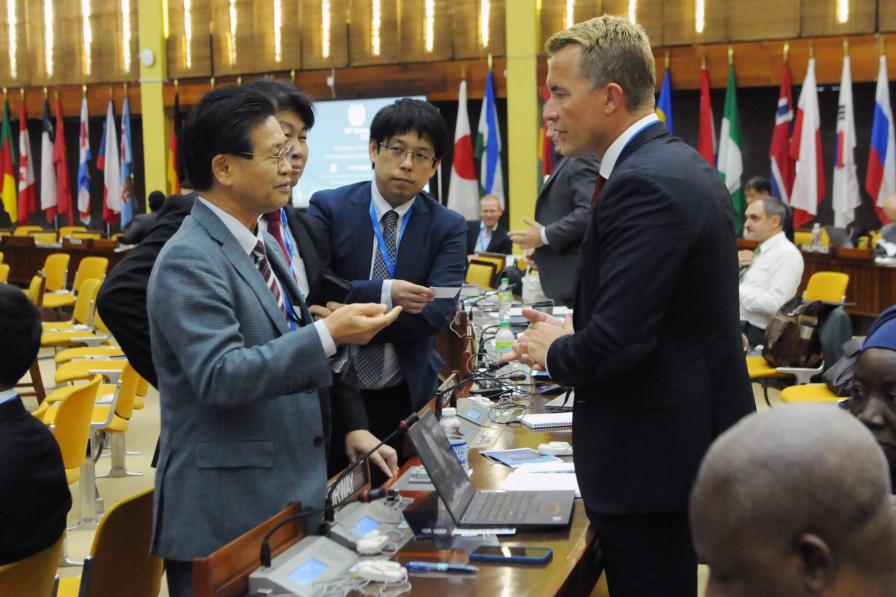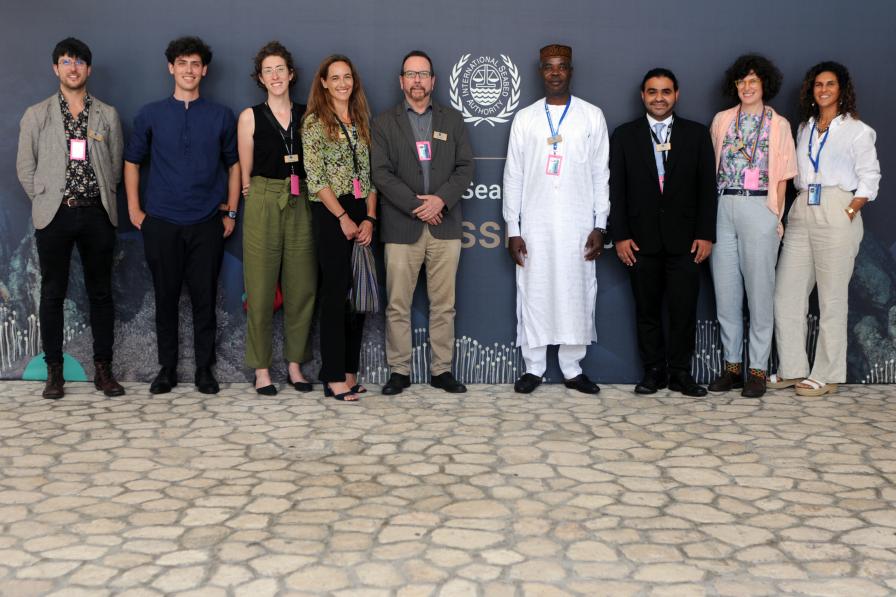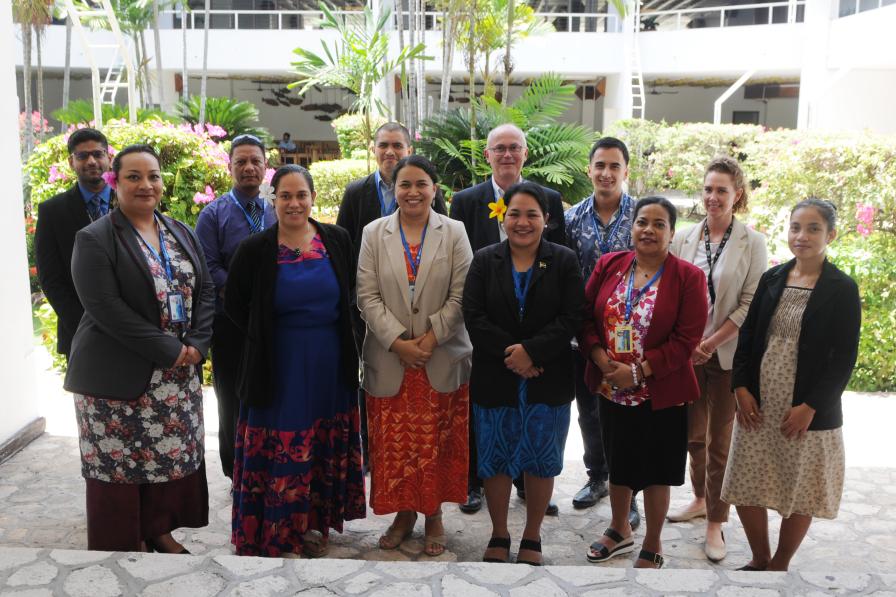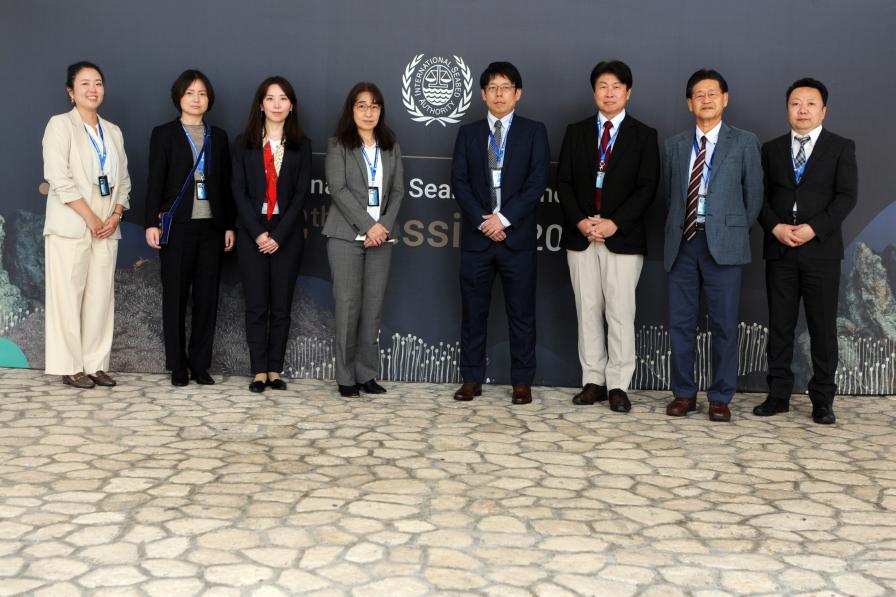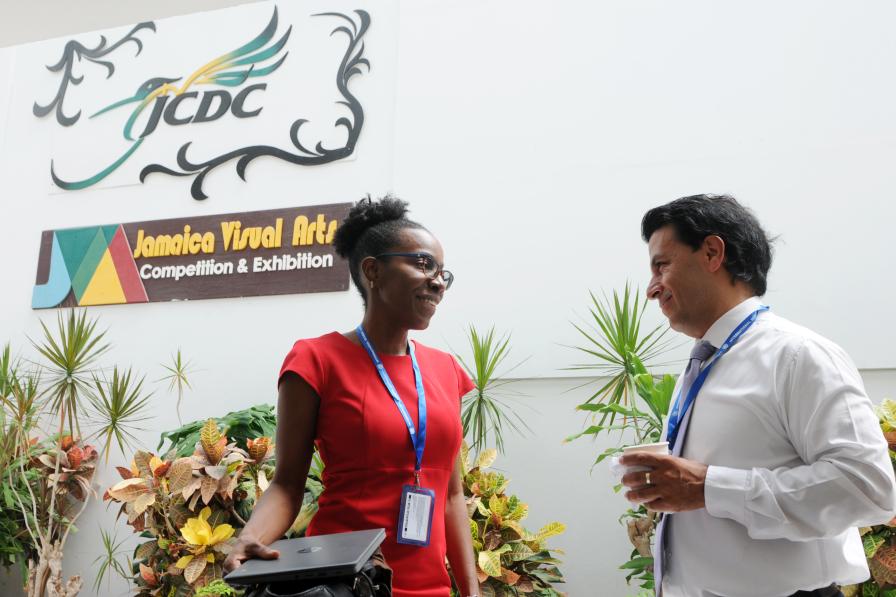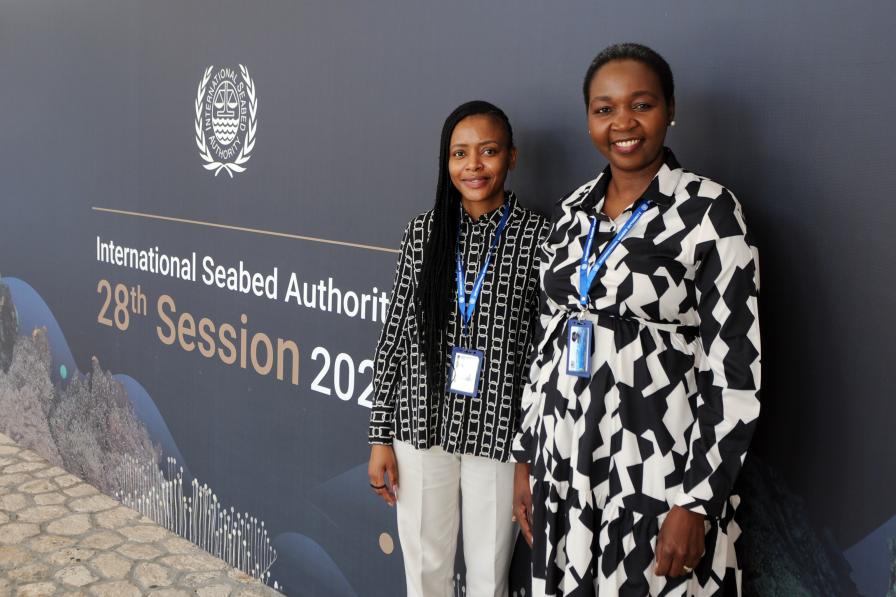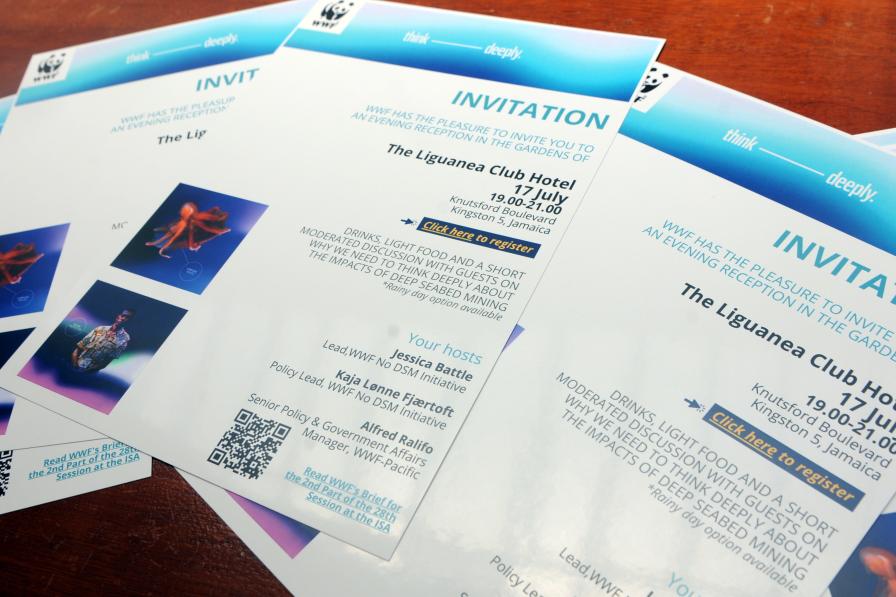“Any future deep-sea mining activities can only take place if clearly demonstrated that they are within the capacity of marine ecosystems ensuring the health of the Ocean and marine biodiversity.”
A robust set of rules, regulations, and procedures and a rigid institutional structure need to be in place for commercial deep-sea mining, ensuring environmental protection, and fair and equitable benefit-sharing. These were some of the main messages from the session of the International Seabed Authority (ISA) Council on the so-called “two-year rule.”
In the morning, Maureen Tamuno (Nigeria), facilitator of the informal Working Group on inspection, compliance, and enforcement (ICE), invited delegates to resume consideration of the draft regulations. On provisions related to inspections, the inspection mechanism, and compliance committee (regulation 96, alt, bis, and ter), a member expressed concerns about potential inspections without prior notification.
Regarding the inspectors’ appointment and supervision (regulation 97), a delegation underscored the importance of including a gender and geographic balance, and the non-discrimination principle. On inspectors’ powers (regulation 98), delegates could not reach consensus on a provision noting that inspectors can seize documents and remove representative samples for examination or analysis.
On inspectors’ power to issue instructions (regulation 99), delegates discussed, without reaching consensus, whether instructions should be issued in cases of threats of “serious” harm of the environment. Further disagreements arose on the inclusion of references to underwater cultural heritage and “adjacent coastal states.”
Delegates held different opinions on the introduction of a temporal scope to the inspector’s instructions. Some members stressed that focus should be on the instructions with no temporal limitations. Members further discussed the inclusion of an instruction requiring a suspension in some or all activities for a specific period, without reaching agreement.
Regarding inspection reports (regulation 100), delegates welcomed efforts to consolidate and streamline the provision to avoid overlaps. Several Council members supported retaining the contractor compliance report (regulation 100bis). A regional group expressed their full support for provisions on complaints related to inspections (regulation 101).
The whistle-blowing procedures (regulation 101bis) received support from many Council members. Some delegations suggested considering it as an ISA policy. One delegation cautioned against whistle-blowing procedures as a “naming and shaming” mechanism.
On the vessel notification, electronic monitoring, and data reporting (regulation 102), some delegates stressed that, although environmental data should be publicly available, they cannot always be provided in real time. An observer suggested clarifying the reference to adaptive management and proposed including reference to “unreported” mining activities.
On the section on enforcement and penalties, regarding issuing a compliance notice, suspension, and termination of the exploitation contract (regulation 103), some delegates stressed the need to decide whether the provision deals with a breach of terms of an exploitation contract or with a “risk of breach,” with some underlining that, if risk of breach is included, a definition should be developed. An observer noted that different progressive actions are required for different types of breaches and called for developing a compliance strategy.
On regulation 104, delegates discussed a provision noting that the cost of remedial action represents a debt for the contractor to the ISA and may be recovered from the environmental performance guarantee, noting that further discussions are required.
On regulation 105bis, delegates supported including a periodic review of the inspection mechanism. Some delegates suggested making the periodic review report publicly available. Some delegates suggested exploring the option of having more frequent reviews initially, followed by five-year intervals once experience grows.
Facilitator Tamuno stated that written submissions will be welcome until 15 September 2023. She thanked delegates for their hard work, noting progress, called for intersessional work and flexibility towards finding common ground, and closed the meeting of the ICE Working Group.
In the afternoon, Council President Juan José Gonzalez Mijares (México) invited delegates to consider the outcome of the intersessional dialogue on the two-year rule and the briefing note of the co-facilitators, with a view to adopting a Council decision.
The two-year rule refers to a provision in the 1994 Agreement relating to the implementation of the UN Convention on the Law of the Sea (UNCLOS) Part XI (the Area). The provision notes that if the ISA Council has not completed the elaboration of the regulations relating to exploitation within two years following the request of a state who intends to apply for approval of an exploitation plan, then the Council “shall nonetheless consider and provisionally approve such plan of work” based on the provisions of the Convention and any rules that the Council may have adopted provisionally. In 2021, Nauru submitted such a request, in connection with its contractor Nauru Ocean Resources Inc, triggering the deadline, which elapsed on 9 July 2023.
Belgium and Singapore, co-facilitators of the intersessional dialogue, reported on the main conclusions of their report, including: the different views on the legal basis for postponing the consideration and/or provisional approval of a pending application for a plan of work; and the guidelines or directives the Council may give to the Legal and Technical Commission (LTC), for the purpose of reviewing a plan of work.
Council Members appreciated the intersessional work that enabled better understanding of mutual positions, while noting that divergent positions remain. Many delegates stressed that no application for a plan of work should be approved prior to finalizing the draft exploitation regulations, including the relevant standards and guidelines. Some lamented the slow pace of negotiations, requesting developing the regulations as a matter of top priority under a concrete time horizon for their timely finalization.
Brazil and Canada announced their support for a precautionary pause and a moratorium on commercial deep-sea mining, noting the lack of adequate scientific information and of a robust regulatory framework ensuring effective environmental protection, and requested ISA members to refrain from submitting plans of work prematurely. They joined the recent calls for a precautionary pause by Ireland, Finland, Portugal, and Sweden, and the call for a moratorium by Switzerland, bringing the total number of states calling for either a precautionary state or a moratorium to 21.
Nauru said they will not sponsor an application for an exploitation contract prior to the conclusion of this July session, but they are not withdrawing their decision to submit a plan of work soon, calling for the timely development of a robust regulatory framework for safe, environmentally sound deep-sea mining.
Delegates expressed divergent opinions on the legal basis for addressing the two-year rule and members decided to continue the intersessional dialogue over the next week with a view to reaching consensus on a Council decision. President Gonzalez Mijares stressed that an updated roadmap for the development of the exploitation regulations will be presented for Council members’ consideration.
All ENB photos are free to use with attribution. For the 2nd Part of the 28th Annual Session of the ISA, please use: Photo by IISD/ENB | Diego Noguera
To receive free coverage of global environmental events delivered to your inbox, subscribe to the ENB Update newsletter.
Informal Working Group on Inspection, Compliance and Enforcement

(L-R) Mariana Durney and Lea Kolmos Weis, ISA Secretariat; Maureen Tamuno, Nigeria, Facilitator of the Working Group on inspection, compliance, and enforcement; and Yongsheng Cai and Tamanna Khan, ISA Secretariat
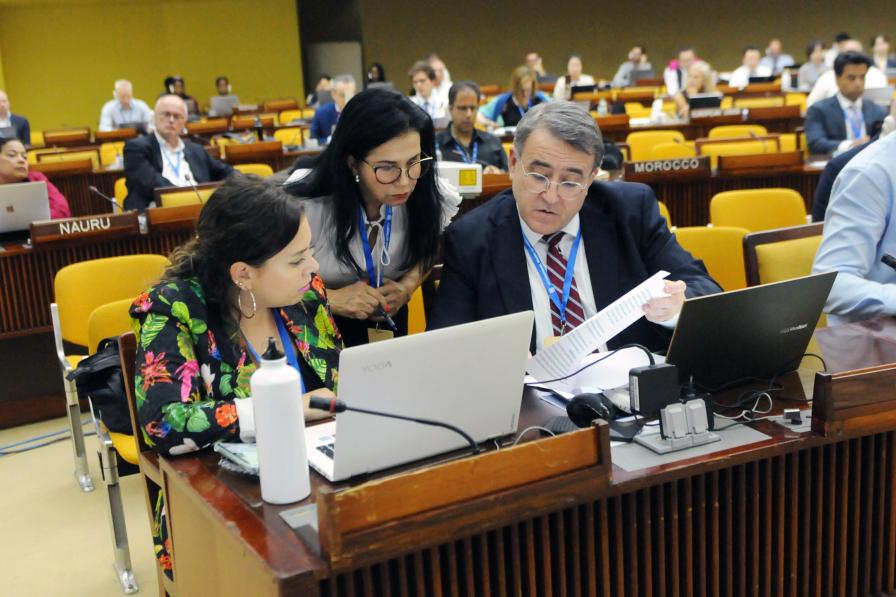
Josefa Arce Vargas (left) and José Antonio Cabedo (right), Chile, with Elza Marcelino de Castro, Brazil
Council Meeting
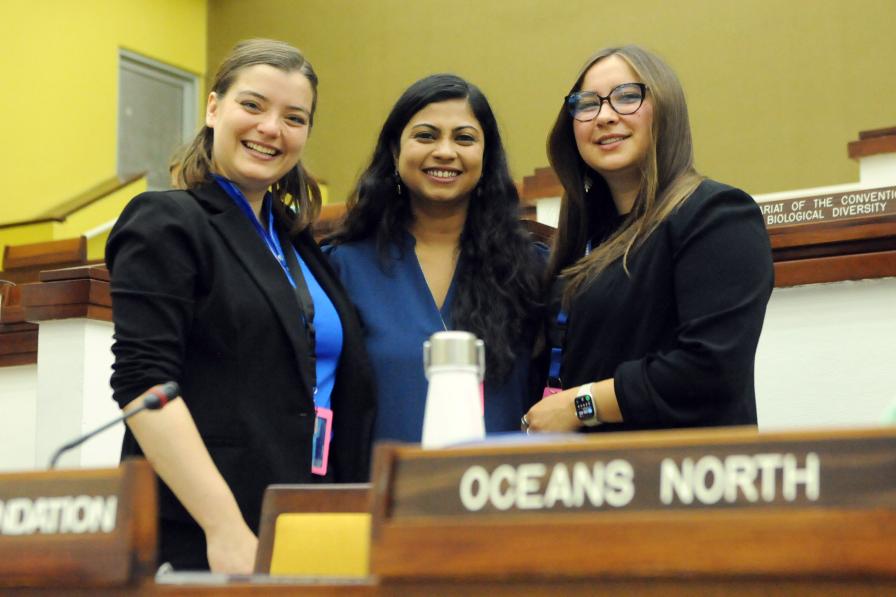
(L-R) Madeline Warner, Ocean Foundation; Anindita Chakraborty, The Pew Charitable Trusts; and Nicole Zanesco, Oceans North
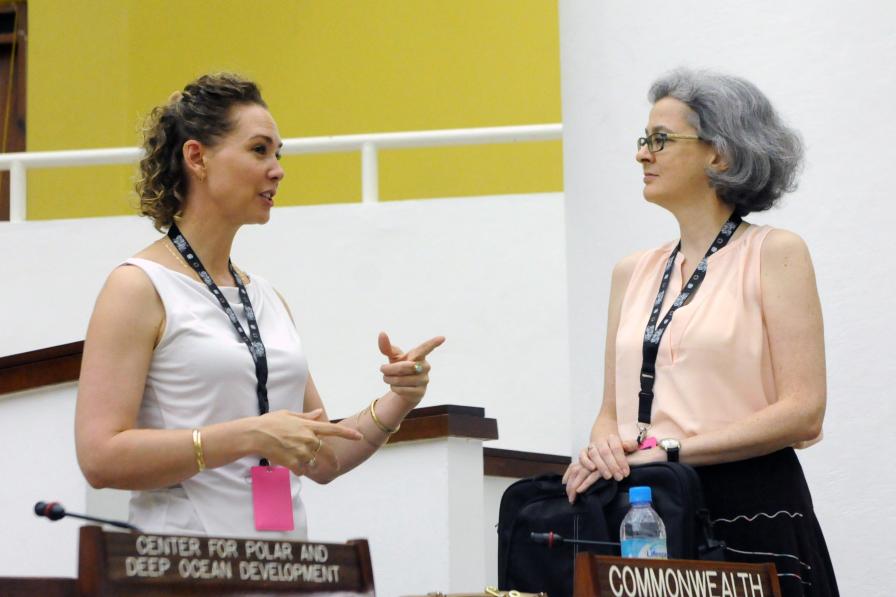
Alison Swaddling, the Commonwealth, and Kathryn Garforth, Secretariat of the Convention on Biological Diversity (CBD)

